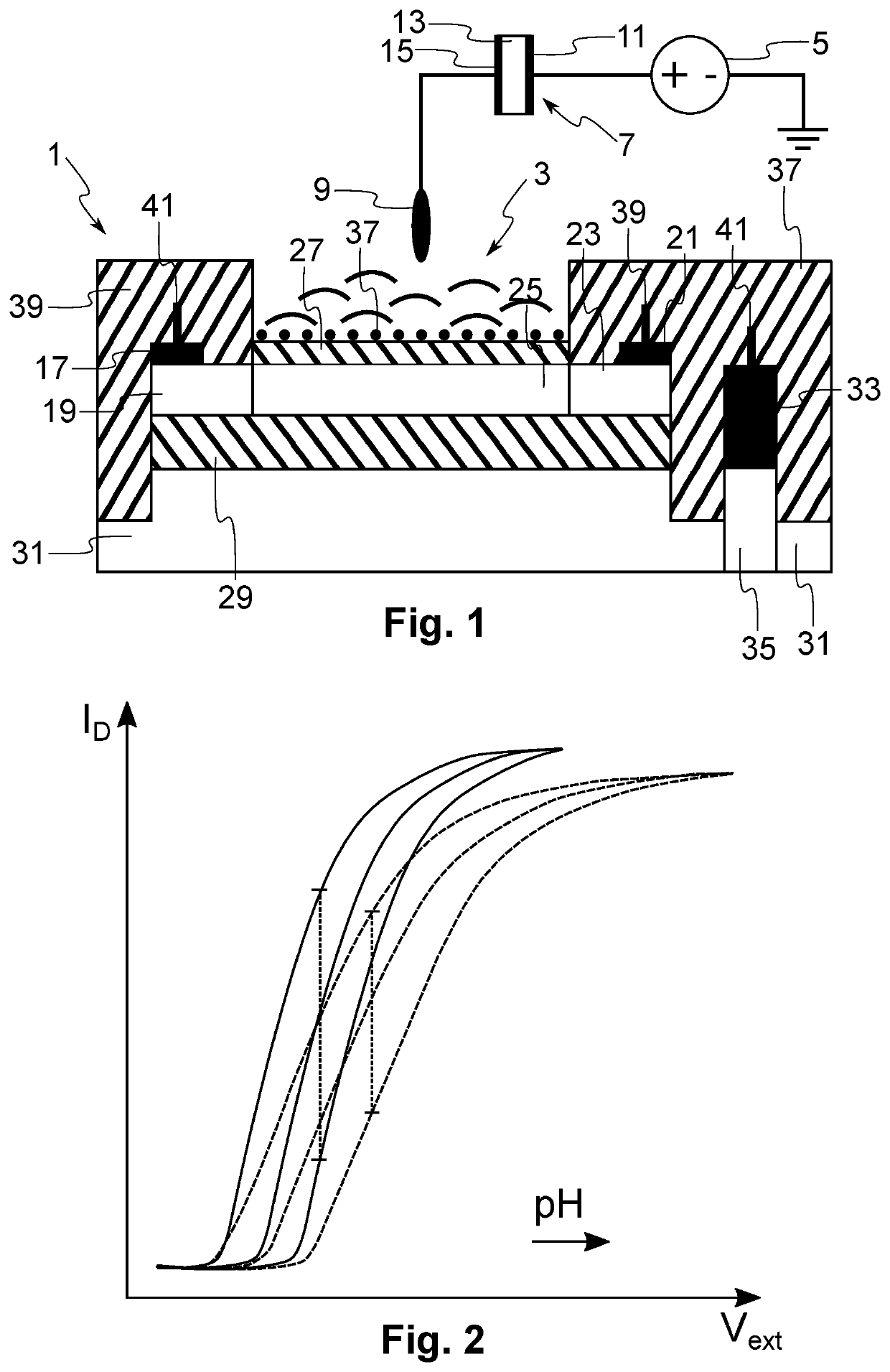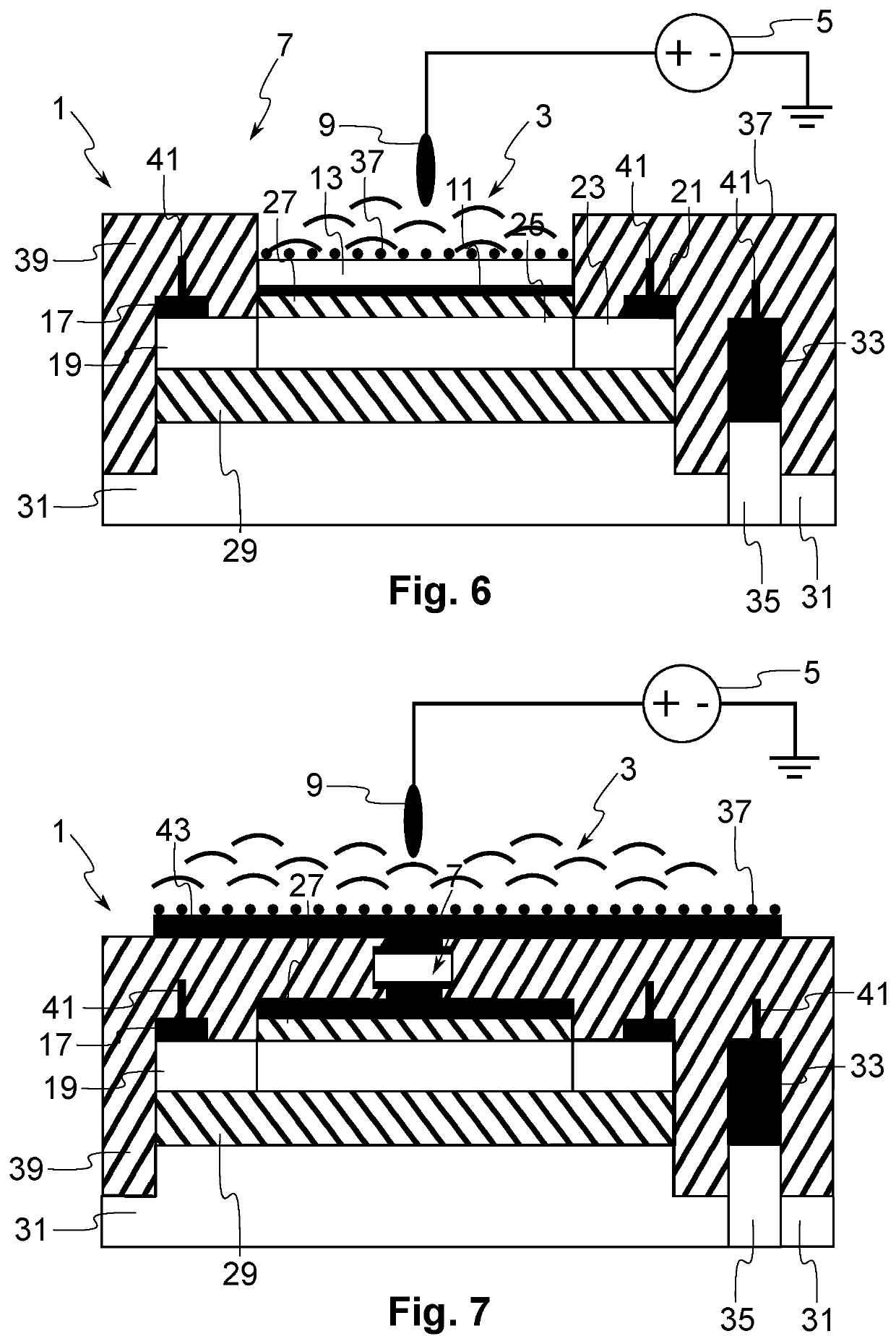Negative capacitance semiconductor sensor
a negative capacitance, semiconductor sensor technology, applied in the field of semiconductor sensors, can solve the problems of insufficient detection theoretical upper limit of sensitivity of conventional sensors, etc., and achieve the effect of increasing the performance of conventional semiconductor sensors and in particular their sensitivity
- Summary
- Abstract
- Description
- Claims
- Application Information
AI Technical Summary
Benefits of technology
Problems solved by technology
Method used
Image
Examples
first embodiment
[0023]FIG. 1 is a schematic view of a multi-gate chemical sensor 1, also referred to as a device, comprising two physically independent or separate gates according to the present invention. In the present description, by a multi-gate device is understood a device comprising at least two gate elements, nodes, terminals or regions. Thus, the device of FIG. 1 could comprise more than two gates. However, the teachings of the present invention are equally applicable to chemical sensors having only one gate element. The sensor 1 of FIG. 1 comprises a field-effect transistor (FET) exposed to a liquid solution 3. As can be seen in FIG. 1, the sensor comprises an external input bias source or node 5, which in this example is a voltage source. The external input bias source is configured to generate a periodic external sensor electrical bias function or signal. It is to be noted that the word “signal” is used in the present description in its broad sense and does not imply that any informatio...
fourth embodiment
[0036]FIG. 7 illustrates the present invention. According to this embodiment, the transistor has an extended gate configuration, where the Fe—C 7 is interposed between the gate oxide (i.e. the first insulator 27) of the transistor and the area or surface exposed to the solution 3. The Fe—C can be positioned on top of the gate oxide, at the other end of the extended gate or in any position between these two extremes. In this example and as is shown in FIG. 7, the front gate comprises an electrically conductive element 43 deposited on top of the first insulator 27, which then extends upwards to form an extended gate configuration. This electrically conductive element is interrupted by the Fe—C 7 as is shown in FIG. 7. Thus, according to this embodiment, there is a through hole in the third insulator 39 for the front gate contact 43 to pass through it to reach the top surface of the first dielectric layer 27. The front gate metal contact forms a substantially flat longitudinal contact ...
PUM
| Property | Measurement | Unit |
|---|---|---|
| thickness | aaaaa | aaaaa |
| gate bias voltage | aaaaa | aaaaa |
| thickness | aaaaa | aaaaa |
Abstract
Description
Claims
Application Information
 Login to View More
Login to View More - R&D
- Intellectual Property
- Life Sciences
- Materials
- Tech Scout
- Unparalleled Data Quality
- Higher Quality Content
- 60% Fewer Hallucinations
Browse by: Latest US Patents, China's latest patents, Technical Efficacy Thesaurus, Application Domain, Technology Topic, Popular Technical Reports.
© 2025 PatSnap. All rights reserved.Legal|Privacy policy|Modern Slavery Act Transparency Statement|Sitemap|About US| Contact US: help@patsnap.com



